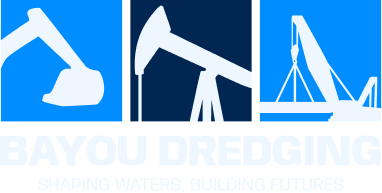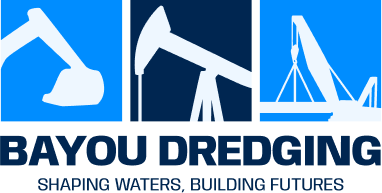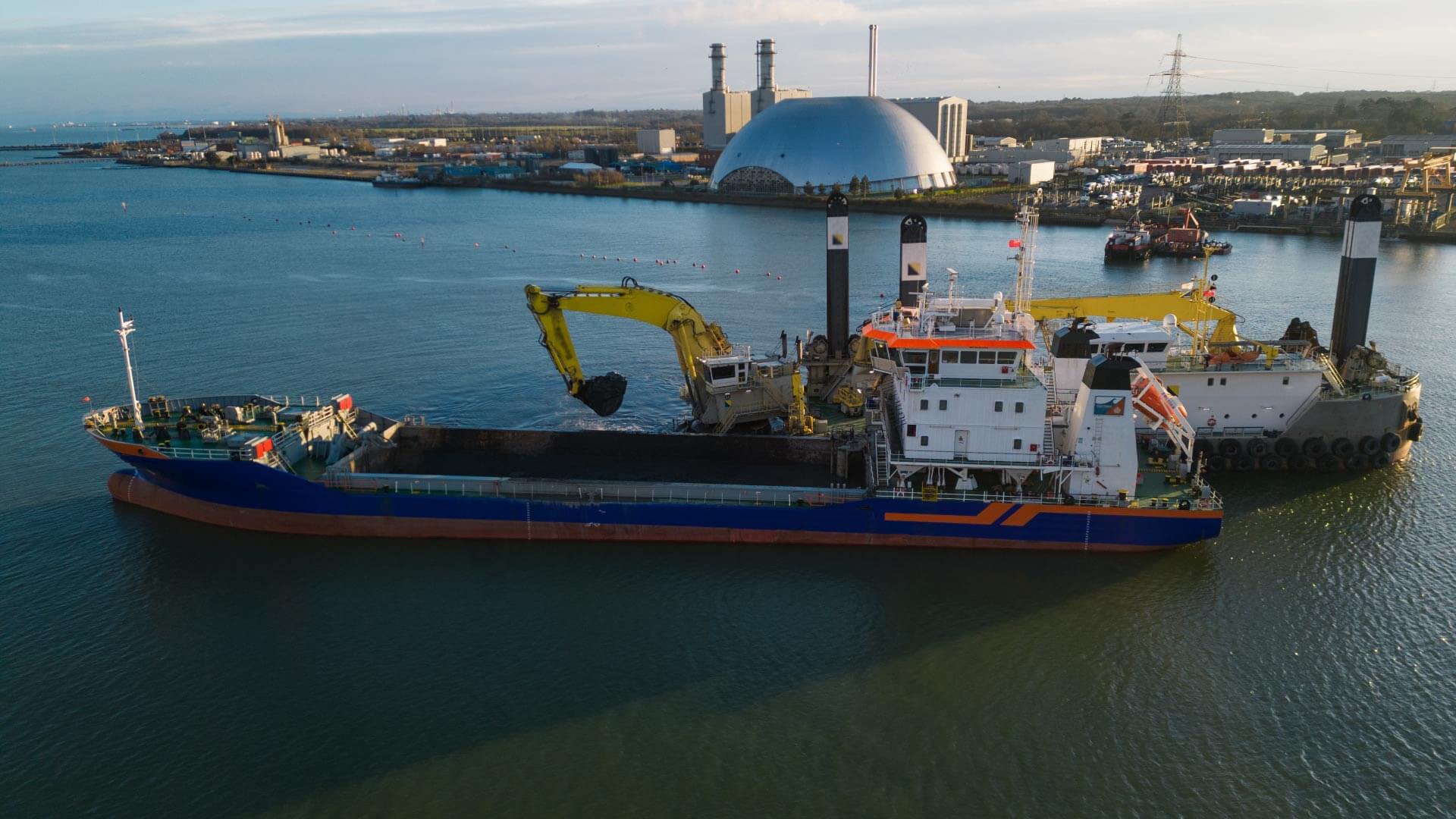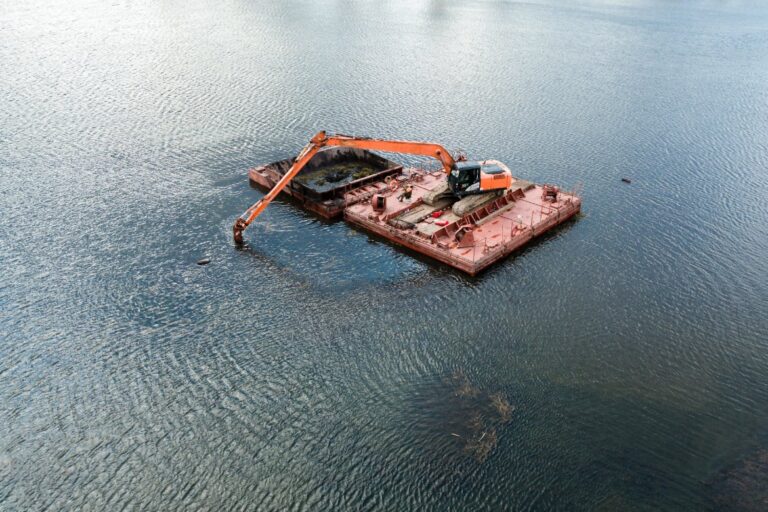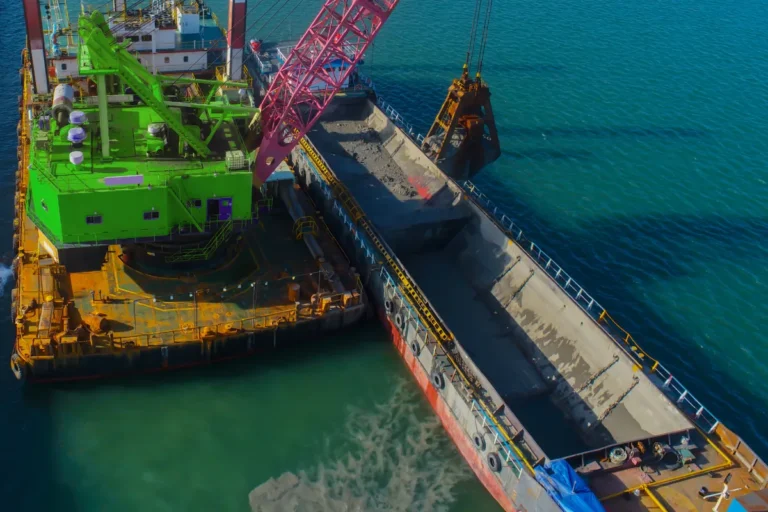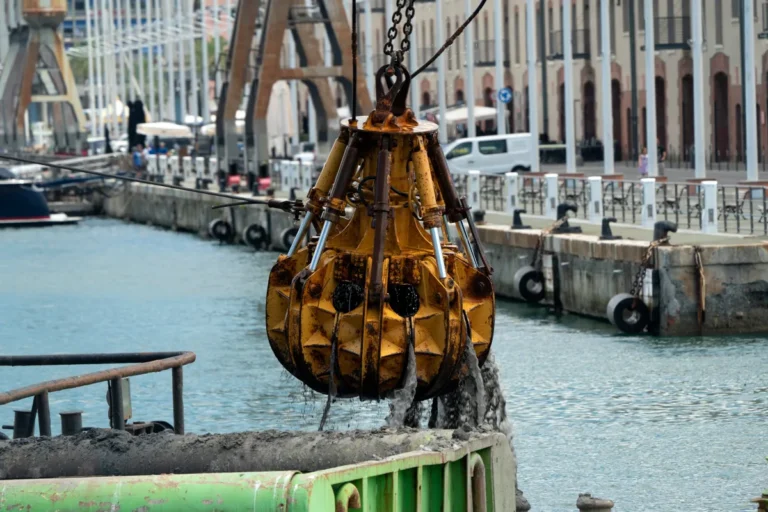Harbor dredging is essential for maintaining navigable waterways by removing accumulated sediment that can obstruct vessel movement. Over time, natural processes such as tidal flows, river discharge, and coastal erosion deposit silt, sand, and debris into harbors, gradually reducing water depth. Without regular dredging for harbor maintenance, ports and marinas face increased risks of grounding incidents, restricted vessel access, and costly shipping delays. By utilizing specialized harbor dredgers, operators can effectively clear navigation channels, ensuring that commercial ships, fishing boats, and recreational vessels can move safely and efficiently.
Beyond improving navigation, harbor dredging plays a critical role in supporting maritime industries and coastal economies. Major shipping ports depend on well-maintained depths to accommodate large cargo ships, facilitating the smooth transport of goods and boosting global trade. Likewise, fishing harbors and marinas require consistent dredging to remain accessible for local industries and tourism. Without proper sediment management, economic activities tied to ports and waterfront infrastructure can suffer, leading to financial losses and operational inefficiencies. By investing in strategic dredging for harbor maintenance, authorities and businesses can enhance port functionality, reduce environmental impacts, and sustain long-term economic growth.
Understanding Harbor Dredging
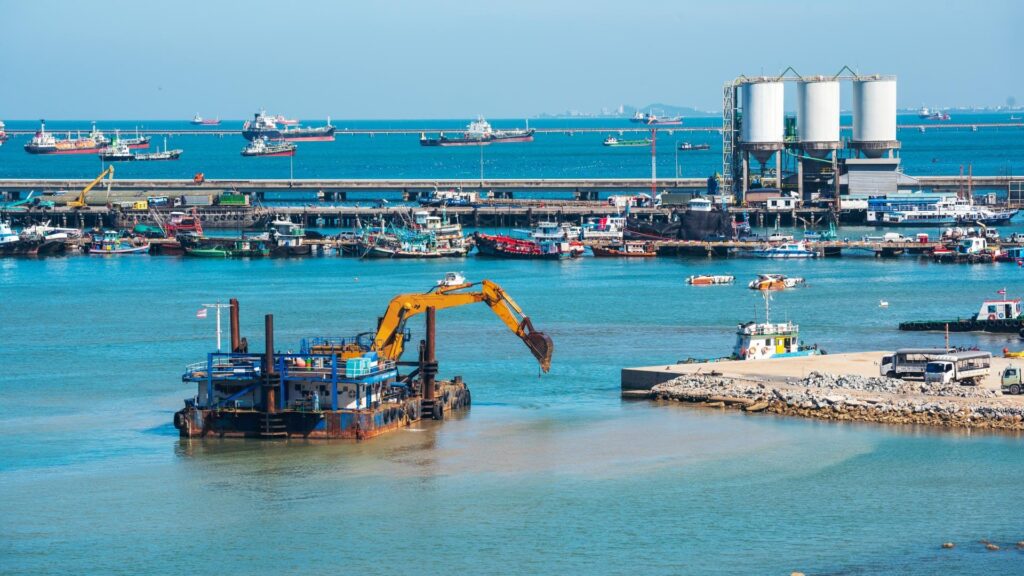
Definition and Purpose of Harbor Dredging
Harbor dredging is the process of removing accumulated sediment, debris, and other materials from the bottom of harbors, ports, and navigation channels to maintain adequate water depth for vessels. This essential maintenance activity ensures that commercial ships, fishing boats, and recreational vessels can navigate safely without the risk of running aground. Using specialized equipment such as a harbor dredger, operators can efficiently excavate and relocate sediment, restoring optimal depth and functionality to maritime infrastructure.
The primary purpose of dredging for harbor maintenance is to prevent sedimentation from obstructing key waterways, thereby facilitating the smooth operation of global trade, commercial fisheries, and coastal tourism. In addition to improving navigational access, dredging supports infrastructure development, allowing ports to accommodate larger vessels and increasing their cargo-handling capacity. Without regular dredging, harbors can become shallow and impassable, leading to economic disruptions and logistical inefficiencies.
Common Causes of Sediment Build-Up in Harbors
Sediment accumulation in harbors is a natural yet ongoing challenge caused by various factors. One of the primary contributors is river discharge, which carries silt, sand, and organic matter downstream, depositing it in harbor basins and navigation channels. Coastal erosion, influenced by wave action, storms, and human activities, further contributes to sediment influx, gradually reducing harbor depth.
Human activities such as land development, dredging in nearby areas, and industrial runoff can also accelerate sedimentation. Construction projects near shorelines often disturb natural sediment balance, increasing the rate at which particles settle in harbors. Additionally, insufficient sediment management strategies can lead to recurring build-up, requiring frequent harbor dredging to maintain safe and efficient port operations.
Environmental and Navigational Impacts of Neglected Harbor Sedimentation
Failure to address sedimentation through routine dredging for harbor maintenance can result in significant environmental and navigational challenges. From a navigational standpoint, excessive sediment accumulation reduces water depth, making it difficult for larger vessels to access harbors without the risk of grounding. This limitation forces ships to carry lighter loads or take alternative, often costlier, routes—hindering trade efficiency and increasing operational expenses.
Environmentally, neglected harbor sedimentation can disrupt marine ecosystems by altering water flow patterns and increasing the concentration of contaminants trapped in sediment layers. Excessive siltation can smother aquatic habitats, reducing oxygen levels and affecting fish populations. Furthermore, stagnant sediment build-up can contribute to poor water quality, impacting both marine life and coastal communities that depend on healthy waterways. Implementing a proactive harbor dredging strategy not only preserves navigational safety but also supports long-term environmental sustainability.
Key Harbor Dredging Techniques
Harbor dredging requires specialized techniques to remove sediment and maintain navigable waterways effectively. The choice of dredging method depends on factors such as sediment type, project scale, and environmental considerations. Various harbor dredgers are used, ranging from mechanical and hydraulic to specialized eco-friendly approaches. Understanding the key techniques ensures efficient harbor maintenance while minimizing operational and environmental impacts.
Mechanical Dredging

Mechanical dredging involves physically excavating sediment using heavy-duty equipment. This method is particularly effective for removing compacted or coarse materials such as sand, gravel, and clay. Common types of mechanical harbor dredgers include:
- Bucket Dredgers – Utilize a series of buckets attached to a rotating chain to scoop sediment from the harbor floor. Best suited for deep excavation and handling dense materials, but it may cause turbidity.
- Backhoe Dredgers—Equipped with a hydraulic arm and bucket, these dredgers are ideal for precision excavation in confined spaces, such as port berths and marina basins. However, they operate at a slower pace than other dredgers.
- Grab Dredgers – Feature a clamshell bucket that lifts and removes sediment, making them effective for dredging near docks and piers. They are highly maneuverable but less efficient in deep waters.
Mechanical dredging is often used in harbor maintenance projects where precise material removal is necessary. However, this method can generate sediment plumes, requiring careful environmental management.
Hydraulic Dredging
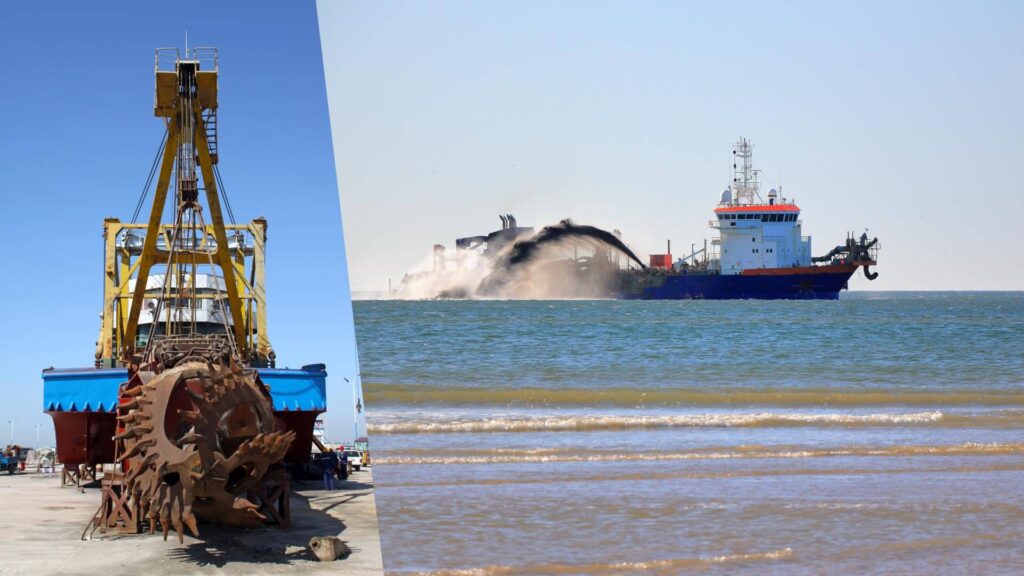
Hydraulic dredging relies on high-powered pumps and pipelines to transport sediment as a slurry, making it highly efficient for handling fine materials such as silt and mud. Two primary types of harbor dredgers used in this method are:
- Cutter Suction Dredgers (CSD) – Equipped with a rotating cutter head that loosens compacted sediment before suctioning it through a pipeline. CSDs are highly effective for deepening harbor basins but require significant power and infrastructure.
- Trailing Suction Hopper Dredgers (TSHD) – Designed for large-scale dredging for harbor maintenance, these vessels use trailing suction pipes to collect sediment and store it in onboard hoppers before disposing of it at designated sites. TSHDs are particularly useful for maintaining shipping lanes and offshore harbor entrances.
Hydraulic dredging minimizes sediment resuspension, making it an environmentally preferred option for many harbor projects. Compared to mechanical dredging, it is also faster and more efficient for large-scale sediment removal.
Specialized Dredging Methods
Beyond traditional mechanical and hydraulic techniques, several specialized dredging methods offer precise and eco-friendly solutions for harbor maintenance:
- Jet Dredging – Uses high-pressure water jets to loosen and displace sediment, making it ideal for delicate excavation projects where minimal seabed disruption is required.
- Airlift Dredging – Employs compressed air to create a suction effect that lifts sediment to the surface. This technique is commonly used for underwater maintenance work in marinas and docks.
- Water Injection Dredging – A low-impact method that injects water into sediment layers to create a natural flow, allowing materials to be transported away by tidal currents. This technique is particularly beneficial for maintaining navigational depth with minimal environmental disturbance.
By selecting the appropriate harbor dredging method, operators can enhance port efficiency, maintain safe navigation, and ensure the long-term sustainability of coastal infrastructure.
Choosing the Right Harbor Dredger
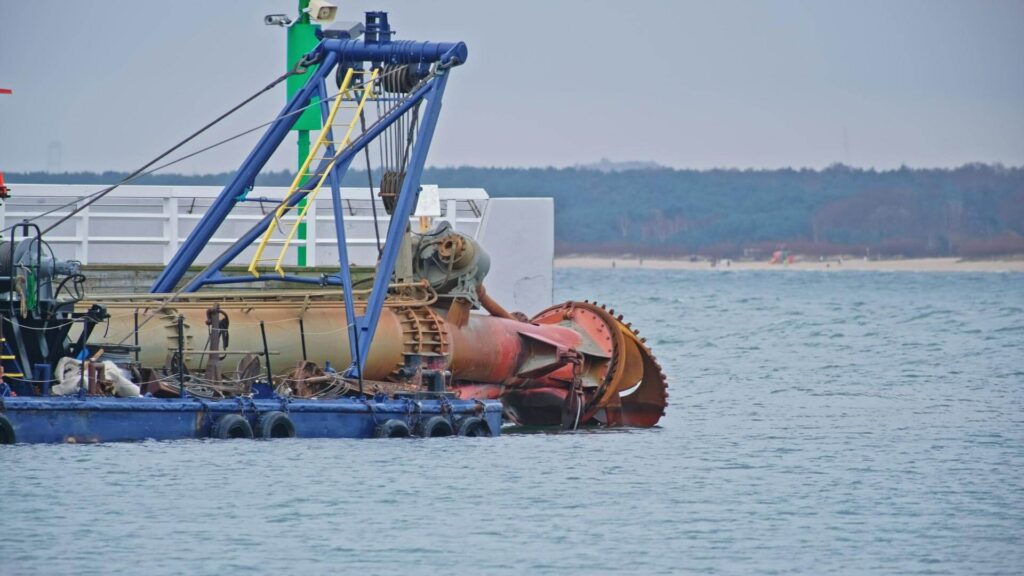
Selecting the appropriate harbor dredger is crucial for ensuring efficient and cost-effective harbor dredging operations. The choice depends on various factors, including the size and depth of the harbor, the type of sediment to be removed, and the overall scope of the dredging project. By carefully evaluating these considerations, port authorities and dredging contractors can optimize sediment removal, maintain navigational safety, and extend the longevity of harbor infrastructure.
Factors Influencing Dredger Selection
Several key factors determine which harbor dredger is best suited for a particular dredging harbor project:
- Harbor Size and Depth – Small marinas and shallow harbors require compact dredgers such as backhoes or grab dredgers for precise excavation. At the same time, larger ports with deep channels benefit from powerful cutter suction or trailing suction hopper dredgers.
- Sediment Type – The nature of the sediment significantly influences dredger selection. Fine silt and mud are best handled with hydraulic dredgers, whereas compacted clay and gravel require mechanical dredgers with cutting or grabbing capabilities.
- Project Scope and Duration – Routine maintenance dredging calls for efficient and cost-effective dredgers that operate with minimal disruption, whereas large-scale capital dredging projects may require high-capacity dredgers capable of handling extensive excavation work over longer periods.
By assessing these factors, operators can ensure that their harbor dredging efforts align with the specific requirements of their location and project goals.
Comparison of Dredging Equipment for Different Harbor Conditions
Different dredging equipment offers unique advantages depending on the conditions within a harbor. Here’s how various dredgers compare:
- Backhoe Dredgers – Ideal for targeted excavation in confined areas such as dockyards and marina basins. They provide precise sediment removal but are limited in speed and scale.
- Grab Dredgers – Best suited for dredging near piers and berths where maneuverability is essential. While effective for handling coarse materials, they are not ideal for large-scale projects.
- Cutter Suction Dredgers (CSD) – Excellent for removing compacted sediments and deepening harbor channels. These dredgers offer high efficiency but require pipeline infrastructure for sediment transport.
- Trailing Suction Hopper Dredgers (TSHD) – Designed for large, deep-water harbors and offshore channels. They efficiently remove sediment and transport it for offshore disposal, making them ideal for continuous maintenance.
- Water Injection Dredgers – A sustainable solution for keeping navigational channels clear with minimal environmental disturbance. These are best for harbors that experience gradual sediment build-up.
Each harbor dredger has advantages and limitations, so it is essential to match the right equipment to the harbor’s specific conditions.
Role of Automation and Technology in Modern Harbor Dredgers
The integration of automation and advanced technology has revolutionized harbor dredging, improving efficiency, accuracy, and environmental sustainability. Modern harbor dredgers are equipped with GPS-guided dredging systems, sonar mapping, and real-time monitoring tools that enhance precision and minimize sediment resuspension.
Automated dredging systems allow operators to optimize sediment removal while reducing fuel consumption and operational costs. Additionally, remote-controlled and unmanned dredgers are emerging as viable solutions for maintenance dredging in restricted or hazardous areas. These technological advancements improve dredging performance and contribute to more sustainable harbor maintenance by reducing ecological impact and enhancing regulatory compliance.
By leveraging the latest dredging technology, ports, and maritime authorities can ensure their dredging operations are both effective and environmentally responsible, keeping harbors functional and accessible for long-term use.
Dredging for Harbor Maintenance: Best Practices
Regular harbor dredging is essential for ensuring that ports, marinas, and navigational channels remain accessible and safe for vessels. Without consistent maintenance, sediment accumulation can lead to restricted water depth, increased risk of vessel grounding, and costly disruptions to maritime operations. To maximize efficiency and minimize environmental impact, harbor maintenance dredging should follow best practices, including scheduled dredging programs, proper sediment management, and strict adherence to environmental regulations.
Regular Dredging Schedules and Monitoring Programs
Implementing a structured harbor dredging schedule is key to preventing excessive sediment build-up and avoiding emergency dredging, which can be costly and disruptive. Routine dredging ensures that harbors maintain the required depths for safe vessel navigation while optimizing port operations.
A proactive approach involves continuous monitoring through hydrographic surveys, which use sonar and depth measurement technologies to track sediment levels over time. By utilizing data-driven dredging strategies, harbor authorities can anticipate when and where dredging for harbor maintenance is needed, reducing operational delays and improving cost efficiency. Scheduled dredging also helps ports comply with navigational safety standards, ensuring that shipping lanes and docking areas remain fully operational.
Sediment Management and Disposal Techniques
Effective sediment management is a critical aspect of sustainable harbor dredging. Once sediment is removed, it must be handled and disposed of responsibly to minimize environmental impact. Depending on the composition of the dredged material, several disposal and reuse options are available:
- Open-Water Disposal – Involves relocating dredged sediment to designated offshore disposal sites, often used for non-contaminated materials.
- Beneficial Reuse – Repurposing dredged material for land reclamation, beach nourishment, or wetland restoration, reducing waste and supporting coastal resilience.
- Confined Disposal Facilities (CDFs) – Secure containment areas where dredged sediment, especially if contaminated, is stored and treated to prevent environmental hazards.
- Sediment Dewatering and Processing – Involves removing excess water from dredged material to facilitate safe disposal or reuse in construction projects.
Selecting the appropriate sediment management strategy depends on factors such as sediment type, contamination levels, and local environmental regulations. Proper disposal planning ensures that harbor dredger operations remain compliant with sustainability standards.
Compliance with Environmental Regulations and Sustainability Measures
Environmental protection is a key consideration in dredging for harbor maintenance. Regulations governing harbor dredging operations are designed to mitigate the impact on marine ecosystems, water quality, and coastal habitats. Compliance with local, national, and international environmental guidelines is essential for securing dredging permits and maintaining responsible dredging practices.
Sustainable dredging practices include:
- Minimizing Sediment Resuspension – Using silt curtains and controlled dredging techniques to prevent sediment from spreading and affecting marine life.
- Eco-Friendly Dredging Methods – Employing water injection dredging or precision dredging to reduce habitat disruption.
- Real-Time Environmental Monitoring – Tracking turbidity levels, water quality, and ecological impact throughout the dredging process to ensure minimal environmental disturbance.
- Utilizing Low-Emission Dredgers – Investing in energy-efficient harbor dredgers with reduced carbon footprints to align with global sustainability goals.
By integrating environmentally conscious dredging techniques, ports, and harbor authorities can maintain navigable waterways while preserving marine ecosystems and complying with legal requirements. Sustainable harbor dredging benefits maritime industries and supports long-term coastal management and resilience.
Challenges and Solutions in Harbor Dredging
Harbor dredging is essential for maintaining navigational access and supporting maritime industries. However, it presents several challenges, including environmental concerns, sediment disposal issues, and high operational costs. Effective harbor maintenance requires innovative solutions that minimize ecological impact while ensuring long-term efficiency and cost-effectiveness. By adopting advanced dredging techniques and sustainable practices, harbor authorities can address these challenges and enhance overall dredging operations.
Addressing Environmental Concerns and Sediment Disposal Issues
One of the biggest challenges in harbor dredging is managing sediment disposal in an environmentally responsible manner. If not handled properly, the removal of large quantities of silt, sand, and other materials can disrupt local ecosystems. In some cases, dredged sediment may contain contaminants from industrial or urban runoff, requiring careful treatment before disposal.
To mitigate these issues, several sustainable disposal solutions have been implemented:
- Beneficial Reuse of Dredged Material – Instead of discarding dredged sediment, it can be repurposed for beach nourishment, wetland restoration, and land reclamation projects. This reduces environmental waste while supporting coastal resilience.
- Sediment Containment and Treatment—Contaminated dredged material can be confined in disposal facilities (CDFs), and sediment dewatering techniques help isolate harmful substances, preventing pollution in open waters.
- Strategic Placement of Sediment—When sediment is clean, carefully planned open-water disposal at designated sites can be a viable solution with minimal ecological impact.
By employing environmentally responsible sediment management strategies, harbor dredger operators can ensure that dredging for harbor maintenance aligns with sustainability goals while maintaining navigational depth.
Mitigating Disruption to Marine Ecosystems and Local Communities
Harbor dredging can temporarily disturb marine habitats, affecting fish populations, coral reefs, and seagrass beds. Additionally, noise and turbidity caused by dredging activities may impact local fisheries and tourism-dependent coastal communities. To reduce these effects, modern harbor dredging techniques prioritize low-impact dredging methods and real-time environmental monitoring.
Key strategies for minimizing ecological disruption include:
- Precision Dredging – Advanced GPS-guided dredging systems allow for targeted sediment removal, reducing unnecessary seabed disturbance.
- Use of Silt Curtains and Sediment Barriers—These barriers help contain dredged material, prevent excessive turbidity, and protect aquatic habitats.
- Scheduling Dredging During Low-Impact Seasons – Conducting dredging for harbor maintenance during periods of minimal fish spawning or migration reduces the impact on marine life.
- Community Engagement and Transparency—Informing local communities about dredging projects and involving stakeholders in decision-making can help minimize disruptions and gain public support.
By integrating these mitigation measures, harbor dredgers can ensure that essential dredging activities proceed with minimal negative impact on the surrounding environment and communities.
Cost-Effective Solutions for Long-Term Harbor Maintenance
Maintaining a harbor’s navigability through routine dredging can be costly, especially for large-scale ports that require frequent sediment removal. Rising fuel prices, labor costs, and regulatory compliance expenses further increase operational challenges. Implementing cost-effective dredging strategies is essential to address these financial concerns.
Some key cost-saving solutions include:
- Regular Monitoring and Predictive Maintenance – Conducting hydrographic surveys and sediment analysis helps predict when and where dredging is needed, preventing costly emergency dredging.
- Utilizing More Efficient Harbor Dredgers – Investing in energy-efficient, high-capacity dredgers reduces fuel consumption and improves overall dredging productivity.
- Optimizing Dredging Cycles—Instead of large-scale dredging at irregular intervals, adopting a maintenance schedule with smaller, continuous dredging efforts can reduce overall costs.
- Exploring Alternative Funding and Partnerships – Public-private partnerships and government grants can help offset dredging expenses for harbor authorities and municipalities.
By adopting a proactive approach to dredging for harbor maintenance, ports, and coastal industries can minimize costs while ensuring long-term navigational safety and economic stability.
The Future of Harbor Dredging
Harbor dredging is essential for maintaining navigational access and supporting maritime industries. However, it presents several challenges, including environmental concerns, sediment disposal issues, and high operational costs. Effective harbor maintenance requires innovative solutions that minimize ecological impact while ensuring long-term efficiency and cost-effectiveness. By adopting advanced dredging techniques and sustainable practices, harbor authorities can address these challenges and enhance overall dredging operations.
Addressing Environmental Concerns and Sediment Disposal Issues
One of the biggest challenges in harbor dredging is managing sediment disposal in an environmentally responsible manner. If not handled properly, the removal of large quantities of silt, sand, and other materials can disrupt local ecosystems. In some cases, dredged sediment may contain contaminants from industrial or urban runoff, requiring careful treatment before disposal.
To mitigate these issues, several sustainable disposal solutions have been implemented:
- Beneficial Reuse of Dredged Material – Instead of discarding dredged sediment, it can be repurposed for beach nourishment, wetland restoration, and land reclamation projects. This reduces environmental waste while supporting coastal resilience.
- Sediment Containment and Treatment—Contaminated dredged material can be confined in disposal facilities (CDFs), and sediment dewatering techniques help isolate harmful substances, preventing pollution in open waters.
- Strategic Placement of Sediment—When sediment is clean, carefully planned open-water disposal at designated sites can be a viable solution with minimal ecological impact.
By employing environmentally responsible sediment management strategies, harbor dredger operators can ensure that dredging for harbor maintenance aligns with sustainability goals while maintaining navigational depth.
Mitigating Disruption to Marine Ecosystems and Local Communities
Harbor dredging can temporarily disturb marine habitats, affecting fish populations, coral reefs, and seagrass beds. Additionally, noise and turbidity caused by dredging activities may impact local fisheries and tourism-dependent coastal communities. To reduce these effects, modern harbor dredging techniques prioritize low-impact dredging methods and real-time environmental monitoring.
Key strategies for minimizing ecological disruption include:
- Precision Dredging – Advanced GPS-guided dredging systems allow for targeted sediment removal, reducing unnecessary seabed disturbance.
- Use of Silt Curtains and Sediment Barriers—These barriers help contain dredged material, prevent excessive turbidity, and protect aquatic habitats.
- Scheduling Dredging During Low-Impact Seasons – Conducting dredging for harbor maintenance during periods of minimal fish spawning or migration reduces the impact on marine life.
- Community Engagement and Transparency—Informing local communities about dredging projects and involving stakeholders in decision-making can help minimize disruptions and gain public support.
By integrating these mitigation measures, harbor dredgers can ensure that essential dredging activities proceed with minimal negative impact on the surrounding environment and communities.
Cost-Effective Solutions for Long-Term Harbor Maintenance
Maintaining a harbor’s navigability through routine dredging can be costly, especially for large-scale ports that require frequent sediment removal. Rising fuel prices, labor costs, and regulatory compliance expenses further increase operational challenges. Implementing cost-effective dredging strategies is essential to address these financial concerns.
Some key cost-saving solutions include:
- Regular Monitoring and Predictive Maintenance – Conducting hydrographic surveys and sediment analysis helps predict when and where dredging is needed, preventing costly emergency dredging.
- Utilizing More Efficient Harbor Dredgers – Investing in energy-efficient, high-capacity dredgers reduces fuel consumption and improves overall dredging productivity.
- Optimizing Dredging Cycles—Instead of large-scale dredging at irregular intervals, adopting a maintenance schedule with smaller, continuous dredging efforts can reduce overall costs.
- Exploring Alternative Funding and Partnerships – Public-private partnerships and government grants can help offset dredging expenses for harbor authorities and municipalities.
By adopting a proactive approach to dredging for harbor maintenance, ports, and coastal industries can minimize costs while ensuring long-term navigational safety and economic stability.
The Future of Harbor Dredging Advancements in dredging technology and automation The role of AI and remote monitoring in harbor dredging operations Sustainable dredging practices and emerging trends Create content for this section of the blog. Note this is just a section anddoeso not include a concluding statement. Make sure it is SEO optimized with the keywords Primary Keyword: harbor dredging Secondary Keyword: harbor dredger, dredging for the harbor.
The Future of Harbor Dredging
As maritime industries continue to expand, the demand for efficient and sustainable harbor dredging is driving significant advancements in technology and automation. Traditional dredging methods are being transformed by artificial intelligence (AI), remote monitoring systems, and eco-friendly dredging solutions that enhance efficiency while minimizing environmental impact. With the increasing need for sustainable port maintenance, the future of dredging for harbor operations will rely on cutting-edge innovations to improve precision, reduce costs, and support long-term navigational safety.
Advancements in Dredging Technology and Automation
Modern harbor dredgers are evolving to incorporate advanced automation, improving the speed, accuracy, and cost-effectiveness of sediment removal. One of the most significant developments is the integration of GPS-guided dredging systems, which allow operators to target specific sediment layers with high precision, reducing over-dredging and unnecessary fuel consumption.
Additionally, real-time data collection and dredging simulation technologies are helping engineers optimize dredging schedules and predict sediment accumulation patterns more accurately. Autonomous dredgers, which operate with minimal human intervention, are also emerging as a viable solution for routine harbor dredging, particularly in remote or hazardous environments. These advancements are improving operational efficiency and enhancing safety by reducing the need for direct human involvement in dredging operations.
The Role of AI and Remote Monitoring in Harbor Dredging Operations
Artificial intelligence (AI) and machine learning are increasingly important in harbor maintenance dredging. AI-powered data analytics enable harbor authorities to monitor sediment movement in real time, providing predictive insights that help determine when and where dredging is required. This level of automation ensures that resources are allocated efficiently, reducing overall dredging costs while maintaining optimal harbor depth.
Remote monitoring systems further enhance dredging operations by allowing real-time tracking of dredger performance, fuel consumption, and environmental impact. By using AI-driven monitoring tools, operators can detect potential issues early, improving maintenance planning and reducing downtime. These technologies are particularly useful in large ports, where continuous harbor dredging is necessary to accommodate high vessel traffic and prevent sediment-related delays.
Sustainable Dredging Practices and Emerging Trends
As environmental concerns grow, the future of harbor dredging will be shaped by sustainability-driven innovations. Ports and maritime authorities are increasingly adopting low-impact dredging techniques to minimize disruption to marine ecosystems. Some of the key sustainable dredging trends include:
- Water Injection Dredging (WID) – A low-energy method that suspends sediment and allows natural currents to carry it away, reducing dredged material disposal.
- Sediment Reuse Strategies – Instead of discarding dredged materials, ports are repurposing them for beach nourishment, wetland restoration, and coastal protection projects.
- Eco-Friendly Harbor Dredgers – The development of electrically powered and hybrid dredgers is reducing the carbon footprint of dredging operations. These next-generation vessels operate with lower emissions, contributing to greener port management.
- Digital Twin Technology – Virtual models of harbors and dredging operations are being used to simulate different dredging scenarios, allowing for more precise and environmentally friendly planning.
By integrating AI, automation, and sustainable dredging practices, the future of harbor maintenance dredging is set to become more efficient, cost-effective, and environmentally responsible. As technology continues to evolve, ports and dredging companies will have access to smarter solutions that improve sediment management while ensuring long-term operational success.
Conclusion
Harbor dredging remains a fundamental practice for maintaining navigable waterways, supporting maritime industries, and preventing sediment-related disruptions. With increasing vessel traffic and ongoing sedimentation challenges, regular dredging for harbor maintenance ensures that ports, marinas, and shipping channels remain operational and efficient. By utilizing advanced harbor dredgers and adopting best practices in sediment management, ports can optimize dredging operations while minimizing environmental impact. As technology evolves, automation and AI-driven monitoring systems are enhancing precision and efficiency, reducing costs, and improving long-term sustainability.
Looking ahead, the future of harbor dredging will be shaped by innovation, sustainability, and smarter dredging techniques. Eco-friendly dredging methods, such as water injection dredging and beneficial sediment reuse, are gaining traction as industries strive to reduce ecological disruption. The integration of digital twin technology and real-time monitoring will further refine dredging operations, making them more adaptive and data-driven. By embracing these advancements, port authorities and dredging professionals can ensure long-term success, balancing economic growth with environmental responsibility to maintain vital maritime infrastructure.
